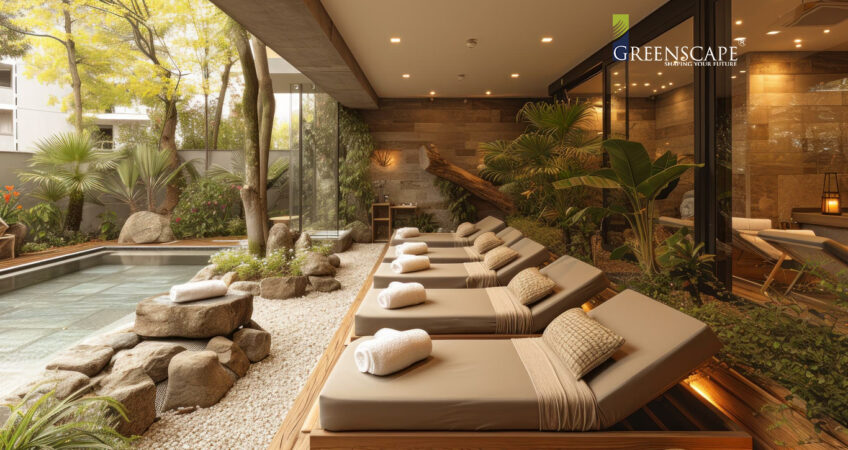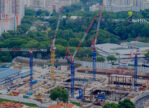Creating Serene Sanctuaries: Essential Spa Architecture Elements for Indian Residential Real Estate

The pursuit of tranquility has become a significant trend in the evolving landscape of modern living, particularly within the realm of residential communities. As the demand for holistic wellness increases, incorporating spa architecture into these environments is no longer a luxury but a necessity. For real estate in India, where urbanization is rapidly changing lifestyles, the integration of serene and rejuvenating spaces can significantly enhance the appeal of residential projects.
This blog delves into the key elements that define effective spa architecture, ensuring these sanctuaries provide the utmost in relaxation and wellness.
THE RISING DEMAND FOR WELLNESS IN REAL ESTATE
In today’s fast-paced world, stress and mental fatigue are common challenges. Consequently, the need for wellness-centric spaces has grown exponentially. Real estate in India is witnessing a paradigm shift where developers are keenly focusing on incorporating wellness amenities, with spa facilities being at the forefront. Such features not only cater to the well-being of residents but also add substantial value to the property.
KEY ELEMENTS OF SPA ARCHITECTURE
Site Selection and Layout:
The foundation of tranquil spa architecture lies in selecting a location that offers peace and privacy. Ideally, the spa should be situated away from the bustling areas of the residential community to ensure a quiet environment. The layout should emphasize open spaces, with pathways that guide residents through lush gardens or calming water features before they enter the spa, setting a serene tone from the outset.
Natural Elements:
Incorporating natural elements is crucial in creating a tranquil spa atmosphere. Use of materials like wood, stone, and bamboo, along with ample greenery, can evoke a sense of being close to nature. Natural lighting, achieved through large windows and skylights, not only enhances the aesthetic appeal but also promotes mental well-being.
Water Features:
Water has a natural calming effect, making it an essential component of spa design. Elements like fountains, waterfalls, and reflection pools should be strategically placed to create soothing auditory and visual experiences. Additionally, hydrotherapy pools and jacuzzis can offer therapeutic benefits to residents, promoting physical relaxation and rejuvenation.
Sound and Scent Management:
Creating a multi-sensory experience is vital in spa architecture. Soundproofing the spa area ensures external noises do not disturb the tranquil environment. Incorporating elements such as ambient music and nature sounds can enhance relaxation. Additionally, the use of aromatherapy diffusers with scents like lavender and eucalyptus can further elevate the serene atmosphere.
Interior Design and Furnishings:
The interior design should reflect simplicity and elegance, with a focus on comfort. Soft, neutral colors, minimalist décor, and comfortable furnishings are key. Spaces should be designed to allow for personal privacy while also fostering a sense of openness and space. High-quality materials and finishes ensure that the spa environment feels luxurious yet welcoming.
Technological Integration:
Modern spa architecture can benefit from the integration of technology to enhance the user experience. Smart lighting systems that adjust to natural circadian rhythms, temperature control for optimal comfort, and state-of-the-art treatment rooms equipped with the latest wellness technologies can set a spa apart as a premier destination for relaxation.
The incorporation of thoughtfully designed spa facilities in residential communities is transforming the landscape of real estate in India. By focusing on elements such as strategic site selection, natural materials, water features, sensory management, elegant interiors, and technological advancements, developers can create sanctuaries of tranquility that cater to the wellness needs of residents. As the desire for holistic living continues to grow, the integration of spa architecture in residential projects will not only enhance the quality of life for residents but also boost the market appeal and value of real estate developments.



